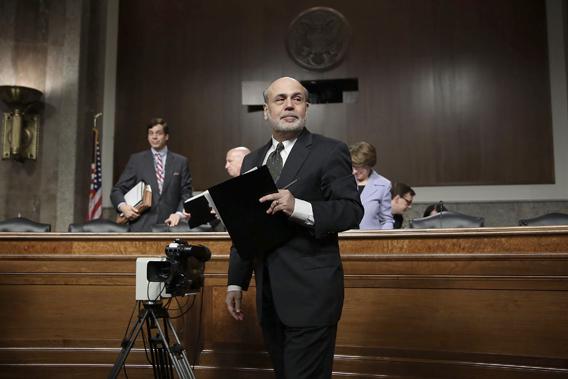Investors will be sitting on the edge of their seats Wednesday at 2 p.m. to hear the latest pronouncement from the Federal Reserve’s Open Market Committee. FOMC releases are always highly anticipated, but this one more than most. And the word on everyone’s lips on Wall Street all morning will be “taper”—which has become Fed-speak for reducing the FOMC’s current pace of $85 billion worth of bond purchases per month. The question is: Will the tapering begin this month, or will it be delayed? And if it is delayed, what kind of hint will the FOMC give as to when the tapering will begin?
All the talk is of tapering because that’s what’s been in the press, with well-sourced journalists reporting vaguely but authoritatively that tapering is on the agenda. That’s too bad, because absolutely nothing in the data or the objective state of the economy gives even the slightest hint of support for even a tiny reduction in bond purchases.
If anything, the balance of the evidence suggests that the Fed ought to deliver a smashing uppercut to economic pessimists by announcing an increase in the pace of bond purchases and a determination to keep accelerating asset buying, unless or until inflation materializes.
Here are the key facts. On Tuesday morning, the Bureau of Labor Statistics announced its Consumer Price Index findings for May. They found that prices increased 0.1 percent across the board in May, and 1.4 percent in the 12-month period that ended in May.
For monetary policy purposes, it’s typically more useful to strip out food and energy prices (which are driven by supply conditions rather than the state of demand) and look at the “core” numbers. Here we see a 1.7 percent increase over the past 12 months. That is close to the Federal Reserve’s long-term target level of inflation. Close to it, but below it. You don’t need a Ph.D. to realize that 1.7 is less than 2. And if you think back to the good old days before the financial crisis, this basic math is all you needed to predict Federal Reserve policy. If the inflation rate was less than the Fed’s inflation target, there was no chance of implementing tighter monetary policy. If unemployment was already very low, the Fed might stand pat. But most likely subtarget inflation would be seen as delivering the “good news” that the economy had room to benefit from the extra boost provided by lower interest rates. Conversely, if inflation was rising up above the target level, it was time for higher interest rates.
Ever since 2008 or so, interest rates have been down around zero, and the Fed has resorted to other tools. But nothing about the basic logic has changed.
If the Fed’s instrument of choice is bond purchases, then the volume of bond purchases should go down if and only if inflation rises above 2 percent. If inflation is below 2 percent, there’s a case for standing pat. But given the continued high level of unemployment—and the catastrophic personal and social consequences of long-term unemployment—there’s a very strong case for increasing bond purchases in response to low inflation.
It’s important to note that the exact quantity of quantitative easing probably isn’t all that meaningful. What’s really going to matter is the signal that the Fed’s message on tapering sends.
The big advantage of my approach is that it would signal a Federal Reserve that is determined to judge monetary policy by objective standards. Tighter money will come into play if and only if high inflation becomes a problem. That kind of framework gives people the reassurance they need to go about their business. Tapering—or even talk of tapering—will only exacerbate the confusions and problems of unconventional monetary policy.
The implication of a taper is that tighter money comes not when inflation needs fending off, but simply when the economy no longer needs life support. The Fed’s inclinations in this regard reflect a gut-level discomfort with the use of unconventional tools. They also all but ensure an endlessly tepid recovery. If any good three-month run of jobs reports prompts tighter money even with inflation nowhere in sight, investors will naturally remain skeptical of the medium-term outlook. Even worse, in the long term, this undermines the Fed’s desire to get “back to normal” since it guarantees that guessing about Fed intentions will remain a major sport. So let’s hope the Fed doesn’t do any tapering this month. And even more, let’s hope that in his post-statement press conference, Ben Bernanke lays out a clear path for the future—no monetary tightening of any kind unless inflation rears its head.
